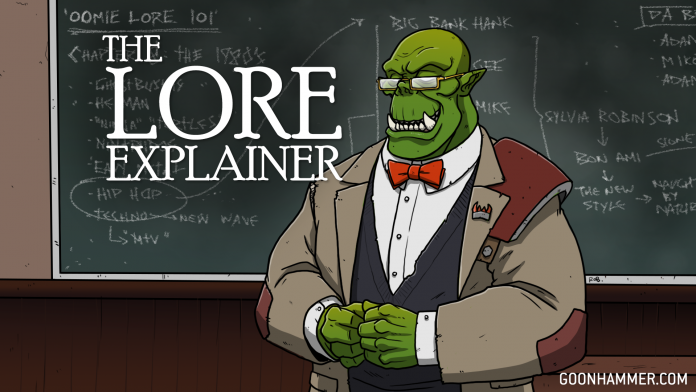In The Lore Explainer, we take a deep look at the lore behind our favorite games, movies, and books, and talk about the story behind them and sum up what you need to know and how you can find out more. Today we’re talking about the lore behind Imperial Knights and their households.
The Questor Imperialis, or the Imperial Knights as they are more commonly referred, are nobles who ride adamantium-clad steeds into battle against the enemies of the Imperium. They hail from worlds with long and storied traditions and their history extends back to even before the Wars of Unification.
Knights in the Lore
Imperial knights are the human faction with the longest contiguous in-universe history, with their origins tracing back to the colonies of the Dark Age of Technology. During mankind’s expansion many colonies were founded on worlds that were, for one reason or another, inhospitable to mankind. On some of these worlds the STCs – supercomputers responsible for creating blueprints for human settlers – would create Knight Suits, industrial machines controlled by a single pilot through a device called the Throne Mechanicum. Because sometimes you need a way to traverse difficult terrain and punch a space dragon to death to protect your colony.
Pilots would bind with these knight suits and their thrones in what is now called the Ritual of Becoming, creating an imprint of the pilot in the knight itself and allowing seamless connection between rider and suit. This did come at the cost of slowly turning the pilots into the neo-feudalist authoritarian weirdos they are known as today, but their regressive rule on their planets is often credited for their society’s survival during Old Night, due to the pilots-turned-nobles being none too fond of AI or psykers. While most of humanity’s colonies were wiped out during that period of upheaval, these Knight worlds became megalomaniacal warlords who consolidated power, forbade the creation of AI, and fortified their holdings.
The Knight Houses made it out of the Age of Strife for the most part relatively intact but hurting for some much needed rearm and repair. Fortunately for these sundry nobles the Emperor finally emerged, starting his Great Crusade and bringing with it new support for those worlds willing to join the Imperium. Through deals struck with either the Emperor or the Fabricator General these worlds were able, among other things, to get new knight suits and a specialized cadre of tech priests called Sacristans who have dedicated their lives to the maintenance of Knights. All of this in exchange for the ancient technological secrets sequestered on these worlds as well as the raw military might of the Knight houses themselves.
Everything was going great until Horus caused his big bad civil war, resulting in many knight houses turning traitor and following the Warmaster. Many more were destroyed, leaving their knights roaming with no master, as Freeblades. Battles were fought across the galaxy as the full brunt of the knight households brought their arms to bear, waving banners of either Terra or the Warmaster. The most famous of these engagements was the Battle of Molech: Imperial forces were dug in to defend the knight world of Molech from the predations of Horus as he burned his way to Terra. Almost ten knight houses were present in defense of the planet, protecting from Traitor Astartes and Titans alike, eventually falling when House Devine was turned by the whispers of Slaanesh. When Molech’s native household turned on their former allies Horus was able to claim his prize.
In the (current) Indomitus Era Knights are still very much doing Knight things – questing, saving fair maidens, and trampling the designated bad guy beneath massive, adamantium heels. These warriors fight alongside formations of the Astra Militarum, Space Marine Chapters, in the shadow of Titan Legions, or even arrayed in their own fighting formations. One notable campaign during these years of Imperial resurgence was the campaign to take Aranea, in which five Imperial Knight houses lead the charge against the traitors of Houses Scorpiod and Araknis. During the campaign these traitors were driven out of their holdings and back to the world of Arenea from which the Iconoclasts originally hailed. Their the combined forces of Imperial Knights and other Imperium forces eventually liberated the world, freeing its enslaved populace and burning the Traitoris households’ keep to slag.
Imperial Knight Houses
Knight Worlds are home to one or more knight houses, usually the lineage of a noble family. These houses are most clearly characterized by the power to whom they’ve sworn primary alliegience, i.e. the Emperor or the Adeptus Mechanicus. Below are a couple examples of some of the more widely known knight houses and a bit about what their deal is. As with any army there is plenty of space to make up some of Your Guys™ and run as those instead, in which case checking out what GW has come up with for the stompy bois is an excellent way to get some inspiration for your own creations.
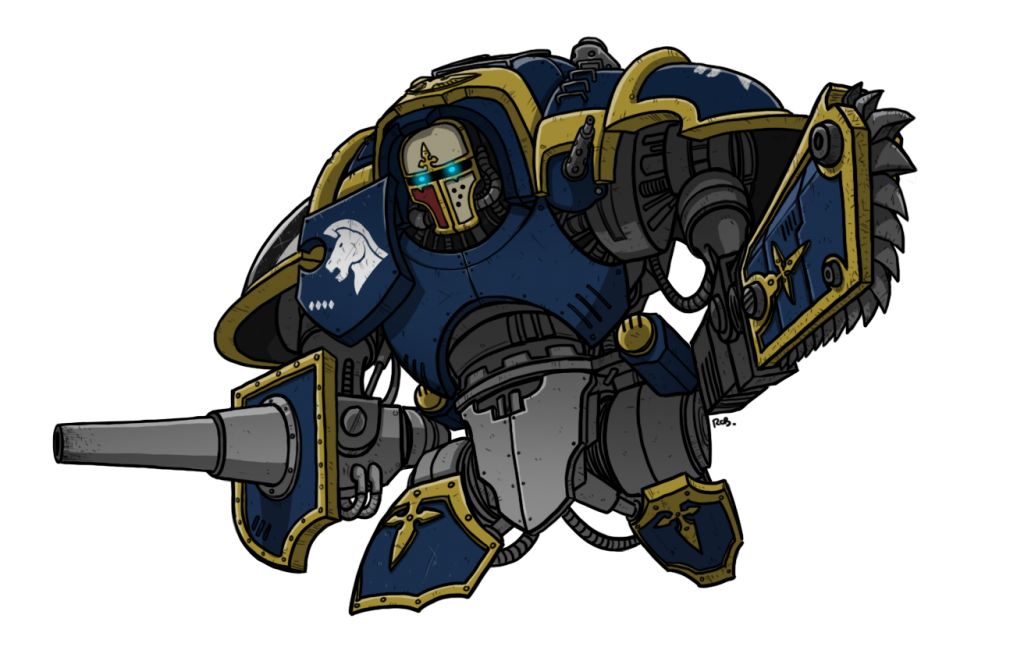
Questor Imperialis
My personal favorite are those knights which more closely align with Terra; the Questor Imperialis Knight worlds are those who have sworn allegiance to the Emperor and Terra. Often these worlds have been left unscarred by industry, and have environs which range anywhere from craggy mountains to ancient forests to expansive grasslands, or even frozen wastelands, volcanic hell-worlds, and empty moonscapes. This particular subset of knight houses fall under the more classical definitions of knight. They’re usually left to their own devices by the Imperium, as long as they bring ruin to the enemies of humanity.
House Griffith
The Scions of Griffith come from Dragon’s End, a volcanic planet named for the xeno drakes that used to inhabit it. Nobles of House Griffith pride themselves on their martial excellence, with their traditions extending back millenia to the times before they constructed their first knight suits, in which their warriors would don obsidian armor and fight the drakes on horseback. The ancestors of their thrones whisper stories of legendary battles with the winged monsters of the past and nobles strive to ensure that enemy and ally alike know of their skill with the blade and their willingness to use it.
House Cadmus
Formerly a house that flew the banner of the Mechanicus on the behalf of the Forgeworld Gryphonne IV, House Cadmus now swears fealty to Terra. Dwelling on Raisa, a world covered in lush forests plagued by mutants due to an unusually high rate of mutation among the planet’s population. Killing these creatures has become a tradition of the household referred to as the Cull, a tournament which determined rulership of the house, with the winner selected by who achieved the highest tally.
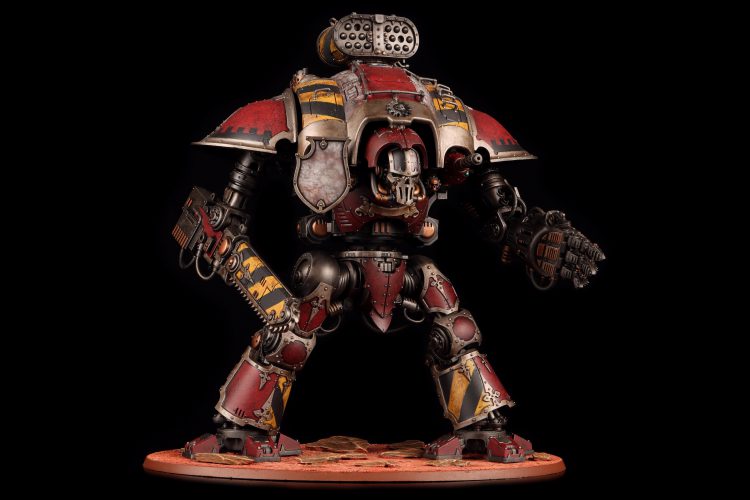
Questor Mechanicus
Knights under the banner of Mars often swear fealty to a forge or even to the Fabricator General. All knight houses have a connection to the Red Planet but these houses take that to the extreme, adopting Martian traditions and religion, even converting once verdant worlds into hellish Forge Planets to feed the war machine of the Imperium. These houses are more often the ones to fight at the feet of Titan Legions, striding amongst toiling seas of Skitarii, or both in the more apocalyptic engagements.
House Taranis
The First Knights, House Taranis is the house of Mars itself, it is central to the legend of the Emperor’s arrival on Olympus Mons, when the Emperor restored an ailing knight to full operational capacity with just a touch, igniting the belief in the Emperor as Omnissiah. A house with deep faith in the religion of the Cult Mechanicus, these knights are part of the vast bulwark that defends the Sol System from those who would see the Imperium brought to ruin.
House Raven
House Raven is one of the more famous households, originally based on the fortress world Kolossi and allied directly with forgeworld Metallica. They are the creators of the Keep Inviolate, this fortification rivals even that of the Space Wolves’ Fang on Fenris for sheer size and impenetrability. Previously the house with the greatest number of Knights, now relegated to questing elements left over after Be’lakor broke their world and pulled it into the warp. Those who used to build fortress keeps are now monsters clad in red, striding inviolately forward on the battlefield in a bitter quest for revenge for their fallen home.
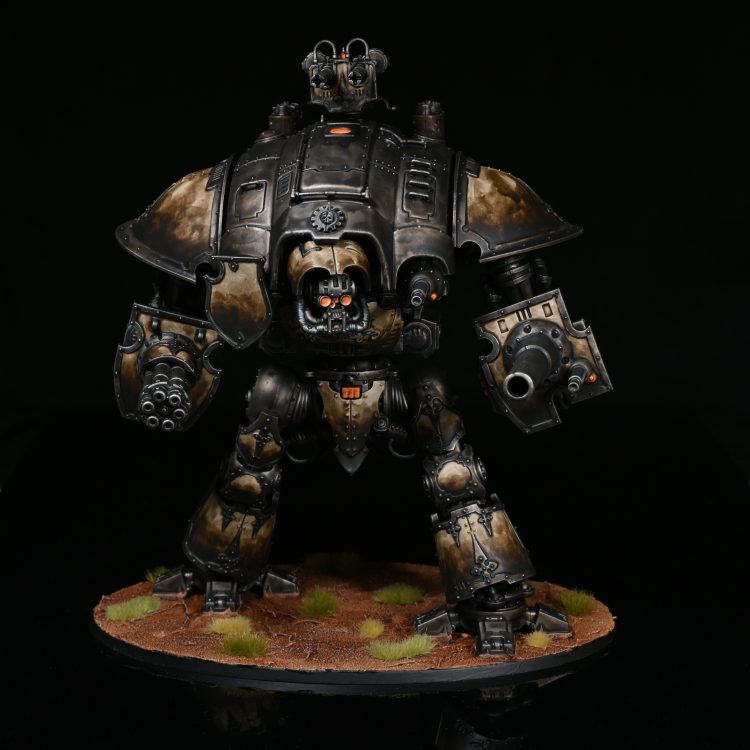
Freeblade Knights
Not really a proper household but well represented both in the lore and on the tabletop, Freeblade Knights are those knights without a master, either due to the near total loss of their household or because of some secret shame. Freeblade Knights roam the galaxy, offering their services to those with a cause they deem righteous. Sometimes they create groups, forming a Freeblade Lance to bring low those who would see humanity brought to ruin.
Notes
Before they were revived in 7th edition with the introduction of the excellent Questoris knight kit, Imperial knights initially appeared in White Dwarf and were later fleshed out a little more in the second edition of Space Marine, or Epic 40k as it’s more commonly known. Back then they were little more than a subfaction of the Admech, but this has since been changed and they are no longer a strictly Mechanicus faction. Knights also didn’t have a fully fleshed out army until 8th edition introduced the Armiger pattern knights, allowing for the big boys to focus on taking the glorious hills and strike down the most nightmarish of foes while the little guys ran down chaff and held your deployment zone down. Since then the range has been fleshed out with stranger knight patterns, most recently seeing Cerastus Knights getting plastic kits.
Key Knight Units
Knights are organized into lances, a warhost that usually involves 2-3 of the larger patterns and 3-7 of the smaller patterns. Listed below are some of the more recognizable knights.
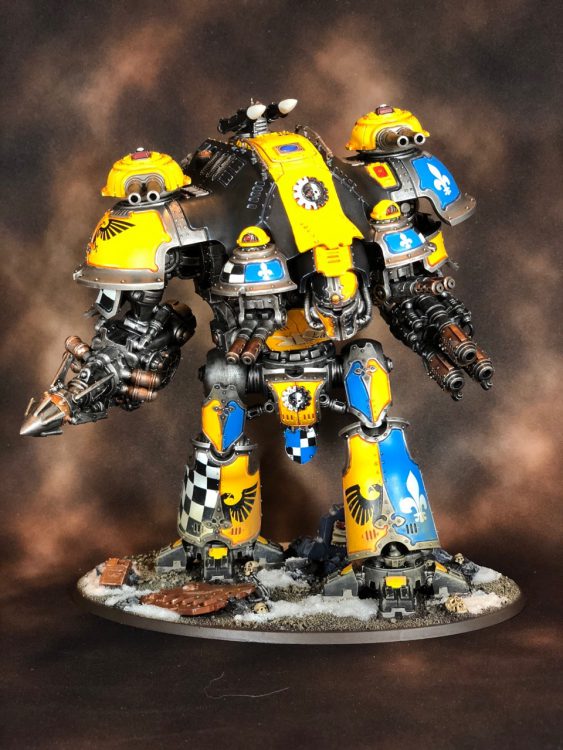
Knight Castellan
As of publication date one of the two Dominus pattern knights, larger suits that are the walking siege engines of the knightly households, the Knight Castellan’s main armaments are a Volcano Lance and a Plasma Decimator. Formations of these walking fortresses are able to bring to bear firepower of a grade more commonly reserved for Void Ships of the Imperial Navy.
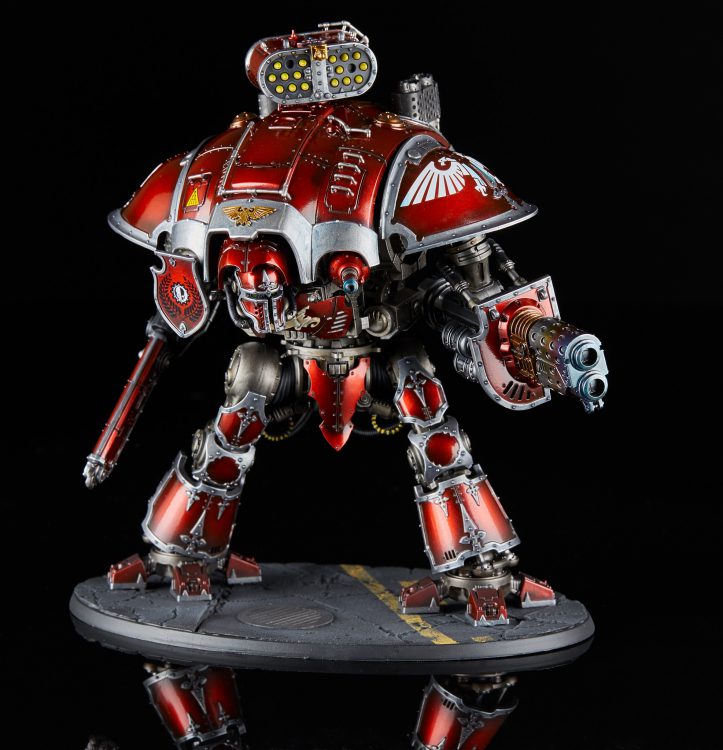
Knight Errant
A bellicose engine and my personal favorite knight. The Errant is a mid-range knight, wielding a thermal cannon, a knight sized melta weapon capable of turning a Land Raider into a bubbling pile of molten metal, and your choice of a Thunderstrike Gauntlet or a Reaper Chainsword, upsized versions of the Power Fist and Chainsword respectively. An Errant is usually possessed of a machine spirit that pushes its pilot into the fray, wreaking havoc on enemy armor be it from range or up close.
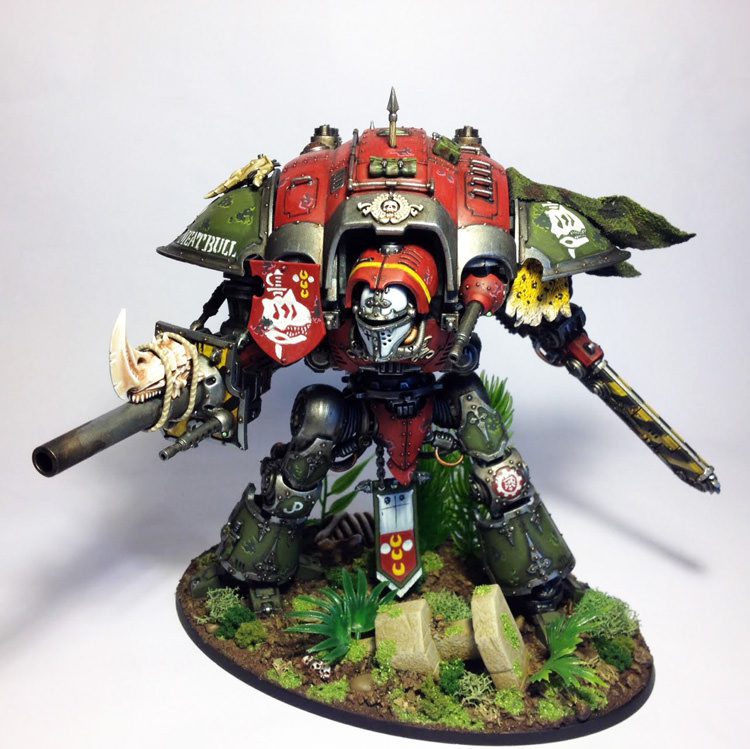
Knight Paladin
When you think Imperial Knight you probably think of the Knight Paladin, with the Rapid Fire Battle cannon and a chainsword, the Paladin is the archetypal imperial knight, and has been since it was first introduced in that White Dwarf so many years ago. The Paladin is the most versatile of suits, taking engagements at long range or close, and is the most common knight fielded by every household.
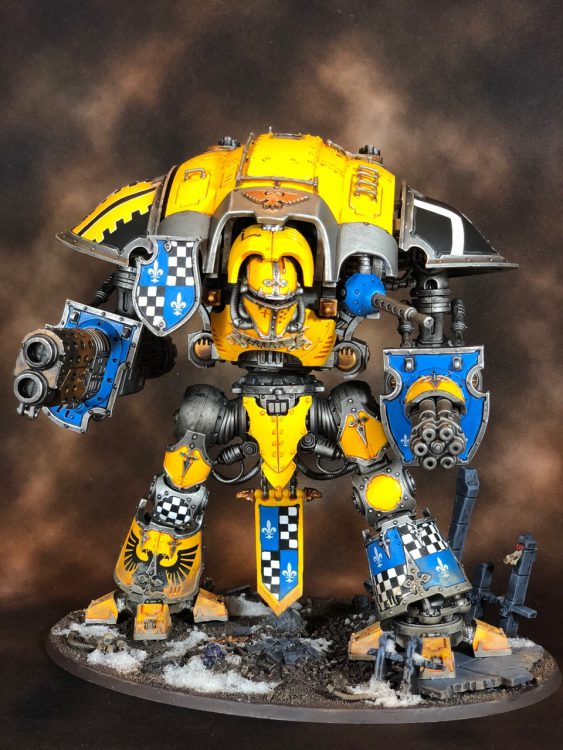
Knight Crusader
The Knight Crusader is a knight paradoxically common with more aggressive pilots, those who like to stand their ground and gun down their enemies. Armed with either a Rapid Fire Battle Cannon or a Thermal Cannon and the Avenger Gatling Cannon, very few things in the battlefields of the 41st millennium can stand to the firepower of the crusading households.
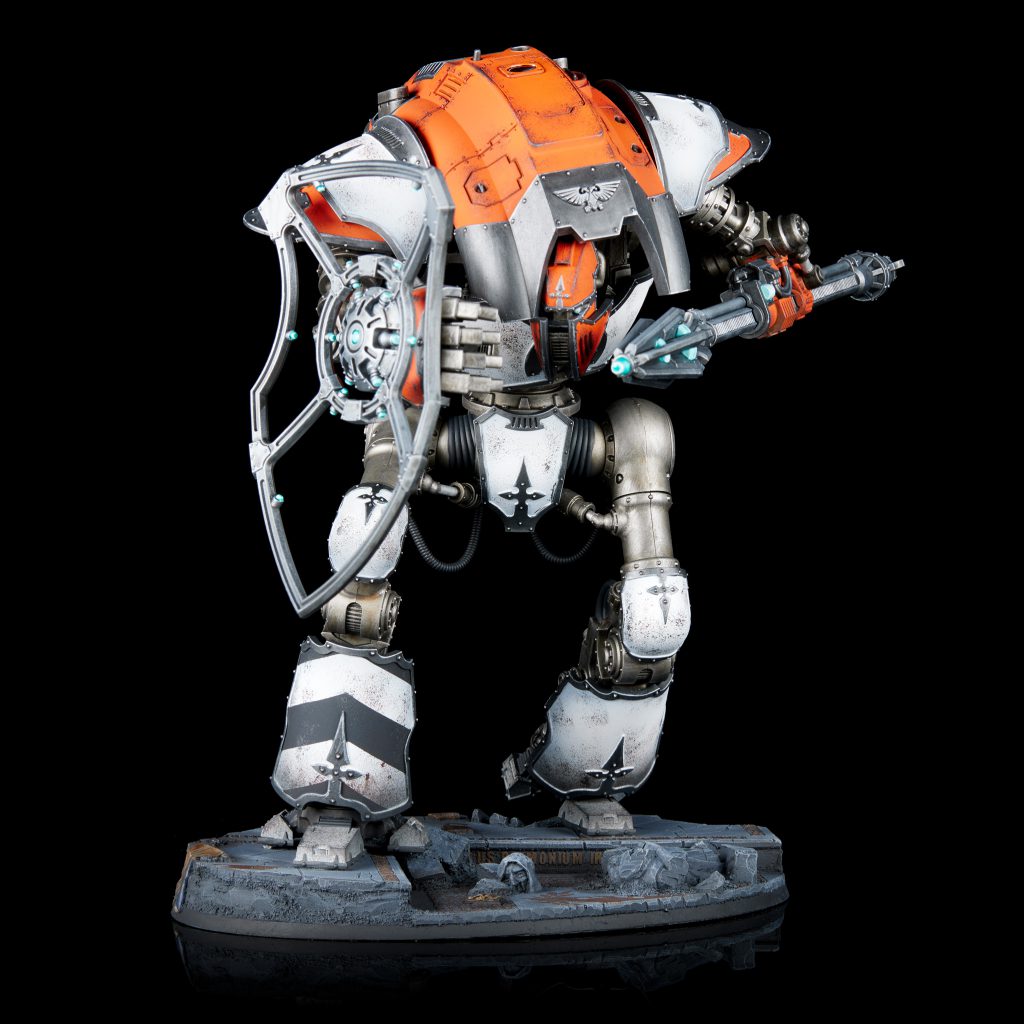
Knight Lancer
The lankier cousin of the Questoris Knight, the Cerastus, with probably the most iconic of this particular knight pattern being the Lancer. With Ion Gauntlet Shield to protect it from weapons both ranged and melee, and the Shock Lance capable of slaying God Engines, the Knight Lancer strides battlefields at the van of a household lance, often putting themselves at great risk to reap greater glory.
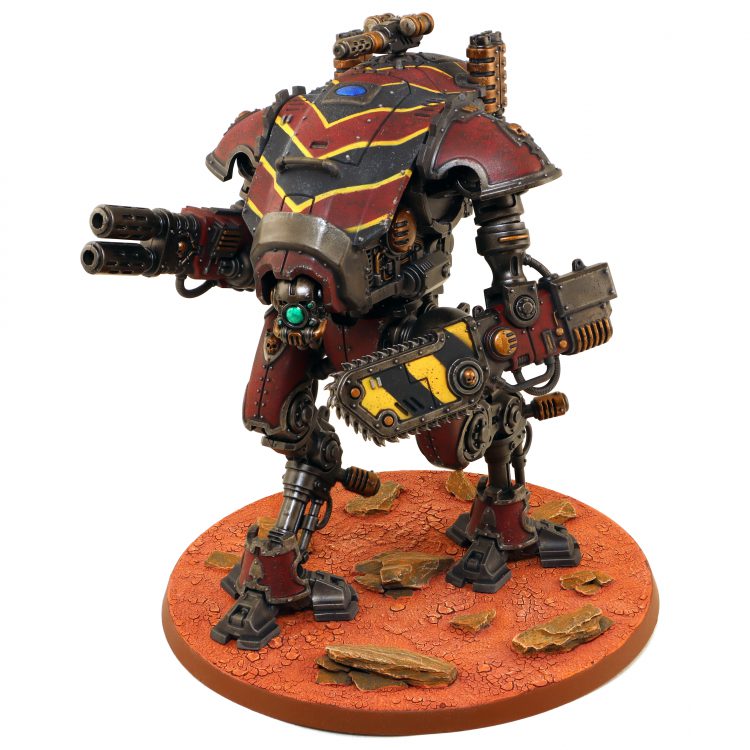
Credit: Pendulin
Armiger Warglaive
Armiger pattern knights are smaller and often operated by those in the household who occupy a lower station, bonded to their betters. This position is not one lacking in dignity though, and plenty of glory can be found when loping at the behest of the household in a Warglaive. With thermal spear and chain cleaver, this knight carries an armament reminiscent of the Errant, and although not operating on the same level of power this knight can still bring down formidable armor and reap a bloody toll.
Canis Rex
The one named character with a datasheet, Canis Rex and its pilot, Sir Hektor, operate as a freeblade, helping out those scattered forces of the Imperium wherever Chaos seeks to subjugate them. The last of his line, Sir Hektor was freed from the grasp of the Iron Warriors when the machine spirit of Canis Rex took it upon itself to free him from the grip of the traitors, ensuring he wouldn’t fall to the fate that had taken the rest of his household.
Final Thoughts
I am biased but I think Imperial Knights operate at an interesting spot in the lore for 40k, neo-feudalist mech bastards who give a little bit of that Titan flavor in a smaller package and bring a bit of that knight in shining armor flavor for folks who may very well be into ladies that reside in lakes and find that Grey Knights and Dark Angels just lack a bit of the presentation that they may be looking for. My one true gripe with the faction is simply that they don’t have much in the way of lore outside of Codices and a few Black Library novels. It may be a while before we see another big narrative update for Knights in 10th edition, but that won’t stop me from taking to the battlefield decked out in Adamantium.
Have any questions or feedback? Have a topic you want to see us cover in a future lore explainer? Drop us a note in the comments below or email us at contat@goonhammer.com.
